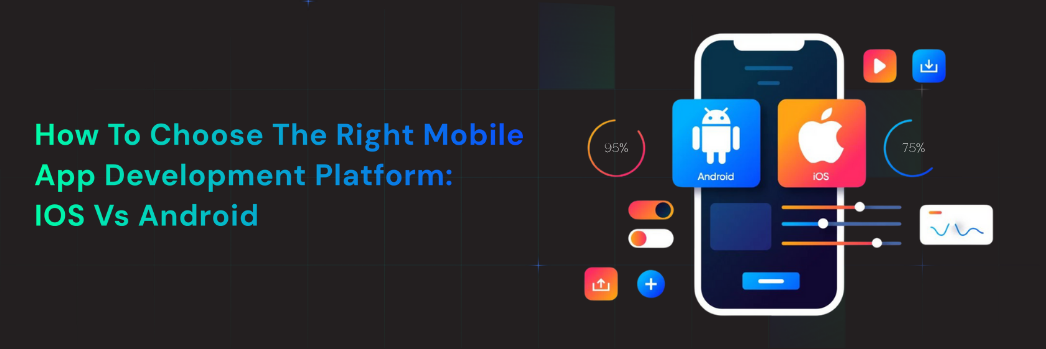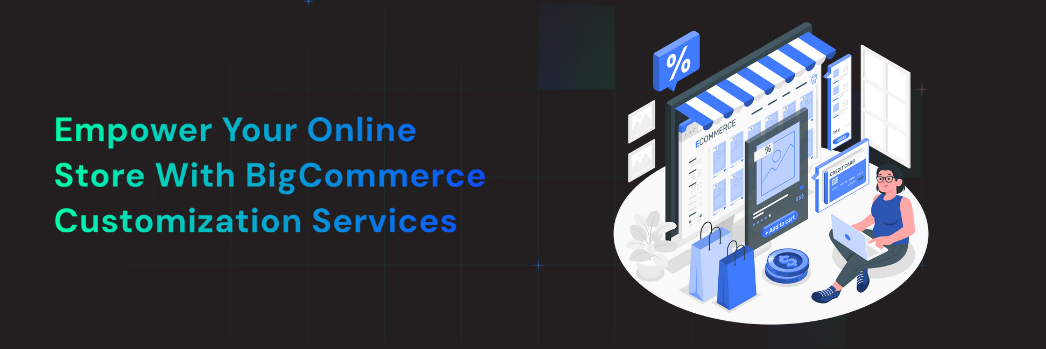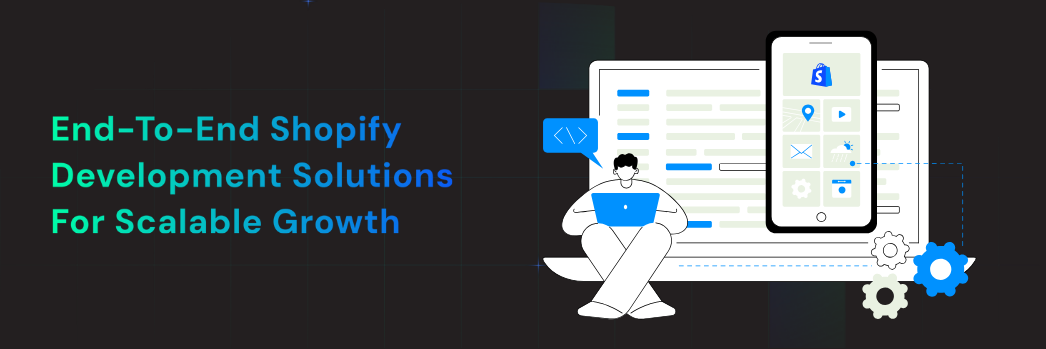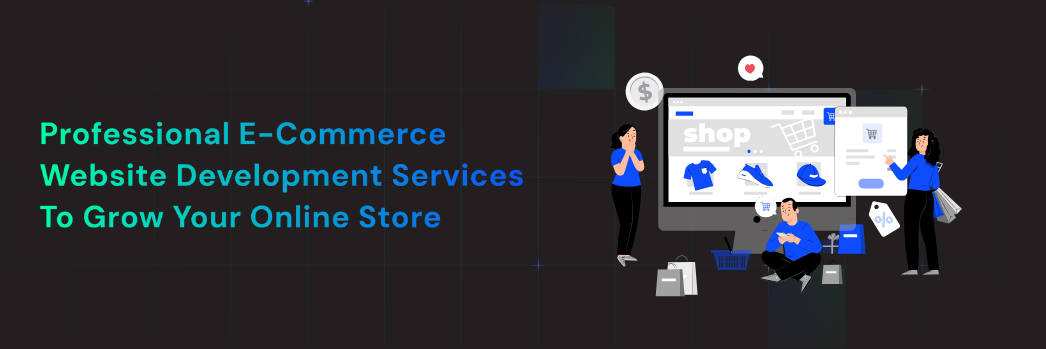Developing a mobile application is now a crucial business strategy. The first important choice you’ll have to make when creating an app, regardless of whether you’re the founder of a startup, the owner of a small business, or a member of a larger corporation, is this: Is it better to start building for Android or iOS?
Your choice of mobile app platform may have an impact on the app’s success. Each platform has a unique set of technological requirements, tactical advantages, and target audience. In this piece, we’ll look at the differences between iOS and Android app development to help you choose the one that best fits your goals, timetable, and target audience.
iOS, developed by Apple, powers all iPhones and iPads. Apps built for iOS are created using programming languages like Swift or Objective-C and are published through the Apple App Store.
Android, developed by Google, runs on a wide range of devices by different manufacturers (Samsung, OnePlus, Google Pixel, etc.). Android apps are built using Kotlin or Java, and are distributed via the Google Play Store and other third-party app stores.
Both platforms offer rich development tools, but their differences go much deeper than the languages they use.
With over 70 percent of smartphone users worldwide, Android commands the largest market share. It is prevalent in parts of Europe, South America, Africa, and Asia. Android provides a wider reach if your company wants to reach a large global audience.
Conversely, iOS is the market leader in countries like the US, UK, Canada, Australia, and the UAE where consumers are more willing to spend money on upscale apps and services. If you want higher revenue per user or premium branding, iOS can be a better option.
Selecting the best platform can be aided right away by knowing the location and device preferences of your target market.
iOS users tend to be:
- More affluent
- Tech-savvy
- Likely to spend on apps, subscriptions, and in-app purchases
Android users:
- Span a broader range of income levels
- Are more price-sensitive
- Tend to download free or ad-supported apps more frequently
If your app is focused on e-commerce, fintech, or luxury services, iOS users may be more aligned with your goals. If you’re offering utilities, educational tools, or mass-market solutions, Android offers a more extensive user base.
Due to device fragmentation, Android apps typically require more time and resources to develop. Testing and optimization are made more difficult by the fact that there are hundreds of Android devices with varying screen sizes, hardware, and performance capabilities.
iOS devices, however, are more standardized. Because Apple maintains strict control over its ecosystem, there are fewer devices to test, QA cycles are accelerated, and development can occasionally happen more quickly.
iOS might give you an advantage if consistent performance and time-to-market are important factors for the success of your software. On the other hand, Android gives developers greater freedom and customization choices.
Publishing your app on the Apple App Store involves a strict review process. Apple enforces high standards for app design, functionality, and content, which means approval can take anywhere from a few days to over a week—and your app can be rejected for non-compliance.
On the other hand, Google Play Store has a faster and more developer-friendly approval system. Apps are typically reviewed and published within hours or 1–2 days. However, this openness also means there are more low-quality or duplicate apps on Android.
If you’re building an app that needs tight security, smooth UI, and quality assurance, Apple’s ecosystem is advantageous. But if speed and flexibility are your priorities, Android may work better.
Both platforms allow for a range of monetization strategies—ads, subscriptions, one-time purchases—but there’s a notable difference in how much users spend.
iOS users consistently spend more on apps and in-app purchases. According to market studies, Apple generates more than 60% of total app revenue, despite having a smaller market share.
Android’s strength lies in ad-based revenue models and high download volume. If your app will rely on advertising (especially in regions like India, Southeast Asia, or Africa), Android can deliver more impressions at scale.

Apple is known for its strong focus on privacy and security. iOS apps benefit from features like on-device machine learning, biometric authentication, and encrypted user data. Apple’s closed ecosystem and hardware-software integration make iOS more difficult for malicious actors to exploit.
Android, being more open-source, offers greater flexibility but comes with a higher risk of malware and device-level vulnerabilities—especially if users download apps from unofficial sources.
If you’re in an industry that handles sensitive user data like healthcare, finance, or legal tech, iOS provides a more controlled environment.
Apple provides a very specific set of design guidelines (Human Interface Guidelines) that ensure consistency across all iOS apps. This results in a smoother and more predictable user experience, which can increase engagement and retention.
Android, by comparison, is more flexible. Developers can customize user interfaces freely, allowing for more creative or brand-specific UI designs. However, this can also lead to inconsistent experiences across devices.
If maintaining a polished and uniform look across all users is key to your brand, iOS is the better option. But if you want to experiment with UI and stand out visually, Android offers more design freedom.
There’s no universal answer to which platform is “better.” The right choice depends on your target audience, budget, launch timeline, and business goals.
Choose iOS if:
- Your target market is in the USA, UK, or UAE
- You’re building a premium product with strong monetization goals
- You need better privacy and security standards
- You’re focused on user retention and experience
Choose Android if:
- You want global reach with a wide audience
- Your app will be ad-supported or free
- You’re working with a limited budget but want mass adoption
- You want more flexibility and device support
If your resources allow, developing on both platforms—either separately (native) or using cross-platform frameworks—can maximize your reach and impact.
Should I build for iOS or Android first?
It depends on your audience. If your users are in regions like the US, UK, or UAE and you’re targeting higher-income segments, go with iOS first. If you’re targeting a larger global audience, Android is ideal.
Is iOS development faster than Android?
Generally, yes. iOS has fewer device types, which simplifies testing and QA. Android apps may require more time due to fragmentation across multiple devices and screen sizes.
Which platform is more secure?
iOS is considered more secure due to Apple’s strict app review process and hardware-software integration. Android provides more flexibility but is also more vulnerable if not developed securely.
Which platform earns more revenue?
iOS users tend to spend more on apps and in-app purchases, while Android has higher download volume and better ad-based monetization.
Can I build for both platforms at the same time?
Yes, you can use cross-platform development tools like Flutter or React Native to build one app that runs on both iOS and Android. However, this may come with some limitations in performance and access to device-specific features.
Search
Recent Post
- How to Choose the Right Mobile App Development Platform: iOS vs Android
- Empower Your Online Store with BigCommerce Customization Services
- End-to-End Shopify Development Solutions for Scalable Growth
- The Role of Technical SEO Services in Better Search Visibility
- Professional E-Commerce Website Development Services to Grow Your Online Store
- Drive Additional Sales & Business Growth with the Finest SEO Services
Categories
- Blog (15)
- Mobile App (3)
- option1 (1)
- option2 (1)
- WordPress (2)
Tags

How to Choose the Right Mobile App Development Platform: iOS vs Android
Lorem ipsum dolor sit amet, consectetur adipiscing elit. Ut elit tellus, luctus nec ullamcorper mattis, pulvinar dapibus leo.

Empower Your Online Store with BigCommerce Customization Services
Lorem ipsum dolor sit amet, consectetur adipiscing elit. Ut elit tellus, luctus nec ullamcorper mattis, pulvinar dapibus leo.

End-to-End Shopify Development Solutions for Scalable Growth
Lorem ipsum dolor sit amet, consectetur adipiscing elit. Ut elit tellus, luctus nec ullamcorper mattis, pulvinar dapibus leo.

The Role of Technical SEO Services in Better Search Visibility
Lorem ipsum dolor sit amet, consectetur adipiscing elit. Ut elit tellus, luctus nec ullamcorper mattis, pulvinar dapibus leo.

Professional E-Commerce Website Development Services to Grow Your Online Store
Lorem ipsum dolor sit amet, consectetur adipiscing elit. Ut elit tellus, luctus nec ullamcorper mattis, pulvinar dapibus leo.

Drive Additional Sales & Business Growth with the Finest SEO Services
Lorem ipsum dolor sit amet, consectetur adipiscing elit. Ut elit tellus, luctus nec ullamcorper mattis, pulvinar dapibus leo.

How to Choose the Right Mobile App Development Platform: iOS vs Android
Lorem ipsum dolor sit amet, consectetur adipiscing elit. Ut elit tellus, luctus nec ullamcorper mattis, pulvinar dapibus leo.

Empower Your Online Store with BigCommerce Customization Services
Lorem ipsum dolor sit amet, consectetur adipiscing elit. Ut elit tellus, luctus nec ullamcorper mattis, pulvinar dapibus leo.

End-to-End Shopify Development Solutions for Scalable Growth
Lorem ipsum dolor sit amet, consectetur adipiscing elit. Ut elit tellus, luctus nec ullamcorper mattis, pulvinar dapibus leo.

The Role of Technical SEO Services in Better Search Visibility
Lorem ipsum dolor sit amet, consectetur adipiscing elit. Ut elit tellus, luctus nec ullamcorper mattis, pulvinar dapibus leo.

Professional E-Commerce Website Development Services to Grow Your Online Store
Lorem ipsum dolor sit amet, consectetur adipiscing elit. Ut elit tellus, luctus nec ullamcorper mattis, pulvinar dapibus leo.

Drive Additional Sales & Business Growth with the Finest SEO Services
Lorem ipsum dolor sit amet, consectetur adipiscing elit. Ut elit tellus, luctus nec ullamcorper mattis, pulvinar dapibus leo.

How to Choose the Right Mobile App Development Platform: iOS vs Android
Lorem ipsum dolor sit amet, consectetur adipiscing elit. Ut elit tellus, luctus nec ullamcorper mattis, pulvinar dapibus leo.

Empower Your Online Store with BigCommerce Customization Services
Lorem ipsum dolor sit amet, consectetur adipiscing elit. Ut elit tellus, luctus nec ullamcorper mattis, pulvinar dapibus leo.

End-to-End Shopify Development Solutions for Scalable Growth
Lorem ipsum dolor sit amet, consectetur adipiscing elit. Ut elit tellus, luctus nec ullamcorper mattis, pulvinar dapibus leo.

The Role of Technical SEO Services in Better Search Visibility
Lorem ipsum dolor sit amet, consectetur adipiscing elit. Ut elit tellus, luctus nec ullamcorper mattis, pulvinar dapibus leo.

Professional E-Commerce Website Development Services to Grow Your Online Store
Lorem ipsum dolor sit amet, consectetur adipiscing elit. Ut elit tellus, luctus nec ullamcorper mattis, pulvinar dapibus leo.

Drive Additional Sales & Business Growth with the Finest SEO Services
Lorem ipsum dolor sit amet, consectetur adipiscing elit. Ut elit tellus, luctus nec ullamcorper mattis, pulvinar dapibus leo.

